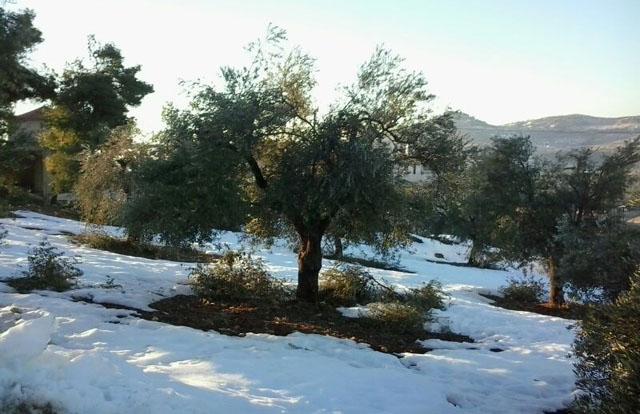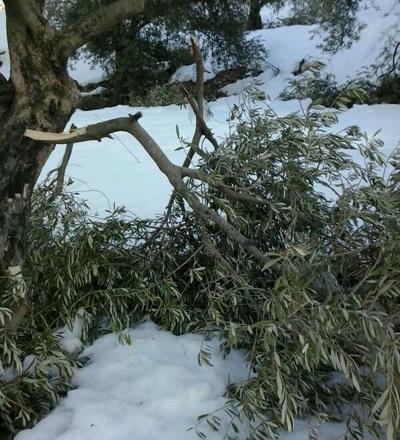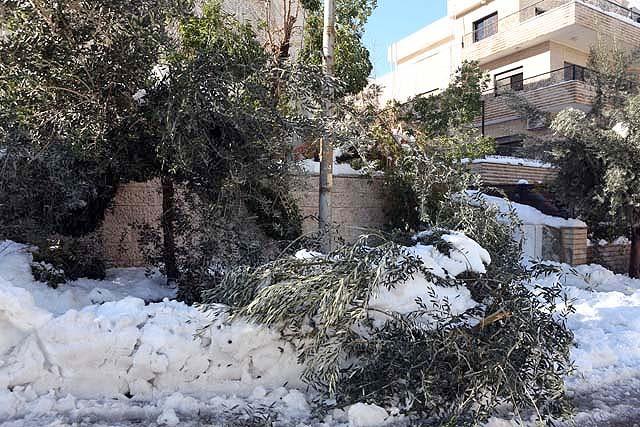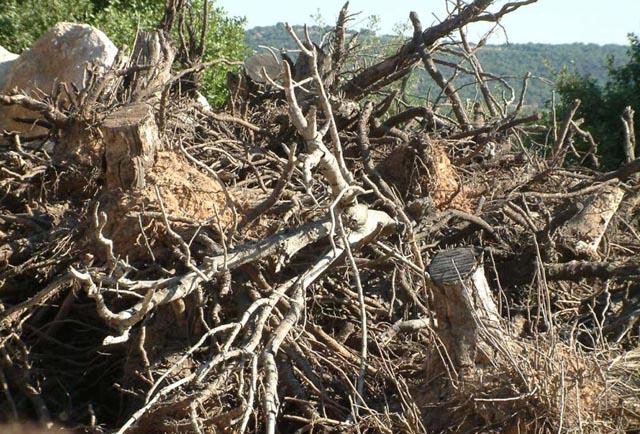You are here
‘10,000 olive saplings to be distributed to Ajloun farmers’
By Hana Namrouqa - Apr 14,2014 - Last updated at Apr 14,2014

AMMAN — The Ministry of Agriculture on Monday started distributing the second batch of olive saplings to farmers in Ajloun Governorate to compensate for trees damaged during last December’s blizzard.
A total of 10,000 olive saplings will be distributed to farmers in the northern governorate to help them cope with losses they incurred as a result of the snowstorm, Agriculture Ministry Spokesperson Nimer Haddadin said.
Ajloun’s olive groves and vineyards sustained severe damage as a result of a blizzard that hit the Kingdom in mid-December. The governorate, located 70km north of Amman, is one of the highest places in the Kingdom and was the most affected by the snowstorm, dubbed Alexa, with accumulated snow reaching over 70 centimetres.
“Some 10,000 olive saplings of the best types were distributed to the farmers in Ajloun in February this year. The saplings are dispensed free of charge,” Haddadin told The Jordan Times.
The ministry also distributed free olive saplings to farmers in Irbid Governorate, 80km north of Amman, earlier this year, he added.
The saplings, produced at Al Faisal Nursery in Ajloun, are being planted under the supervision of specialised staff at the ministry to ensure their survival and sustainability, according to Haddadin.
The blizzard dealt a “strong blow” to Jordan’s forestry sector, according to officials and conservationists, who said more than 20,000 trees were uprooted and hundreds of thousands of branches were broken.
In the Ajloun Forest Reserve, which extends over 12,000 dunums, a total of 1,047 trees, making up 20 per cent of the reserve’s green cover, were broken, while in Jerash Governorate, 48 kilometres north of Amman, more than 12,237 forest trees were uprooted in the Dibbeen Nature Reserve.
Illegal logging during winter, wildfires in summer and insufficient rain due to climate change are the main threats to Jordan’s shrinking green cover, which stands at less than 1 per cent of the country’s total landscape, according to experts.
Related Articles
The Ministry of Agriculture on Wednesday started distributing thousands of olive saplings to farmers in Ajloun Governorate to compensate for trees damaged in last December’s snowstorm.
Thousands of saplings will be planted across the country on Wednesday to compensate for the trees destroyed in December’s snowstorm, which was a “strong blow” to Jordan’s forestry sector, an official said on Monday.
Two months after the strongest snowstorm in over a decade hit the country, conservationists announced on Wednesday that one-third of the Kingdom’s forests were damaged, warning that the worst is yet to come.


















